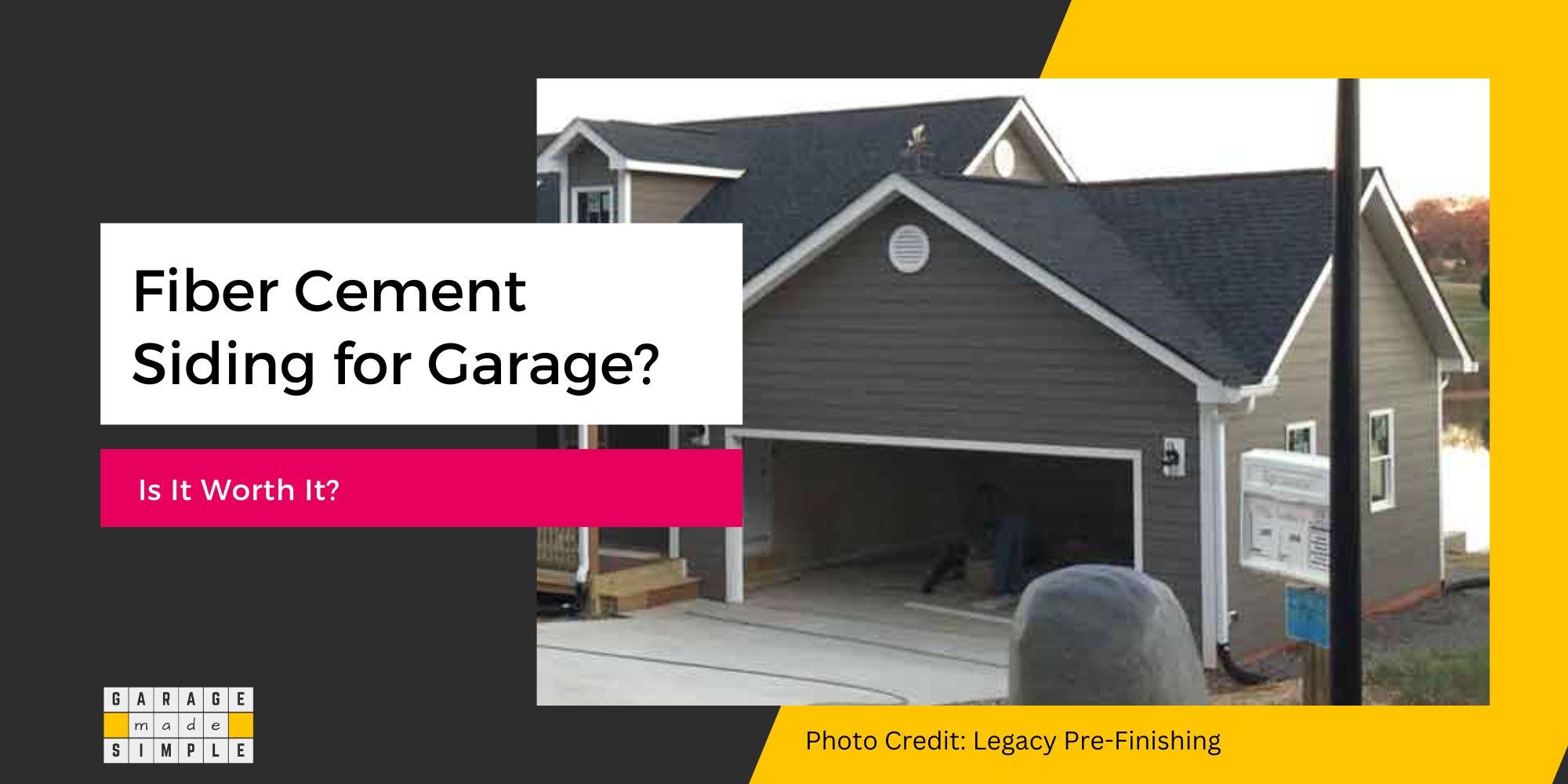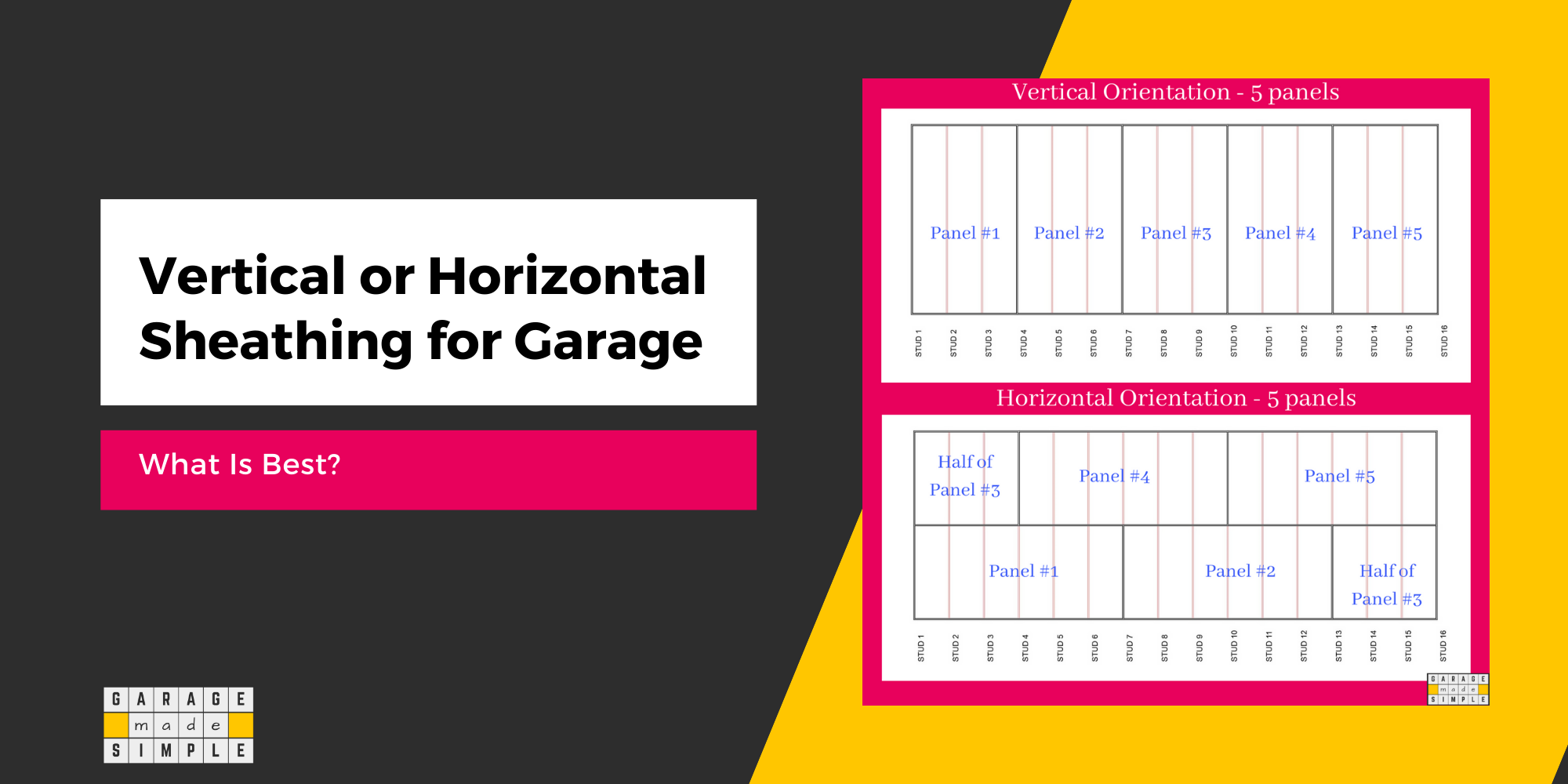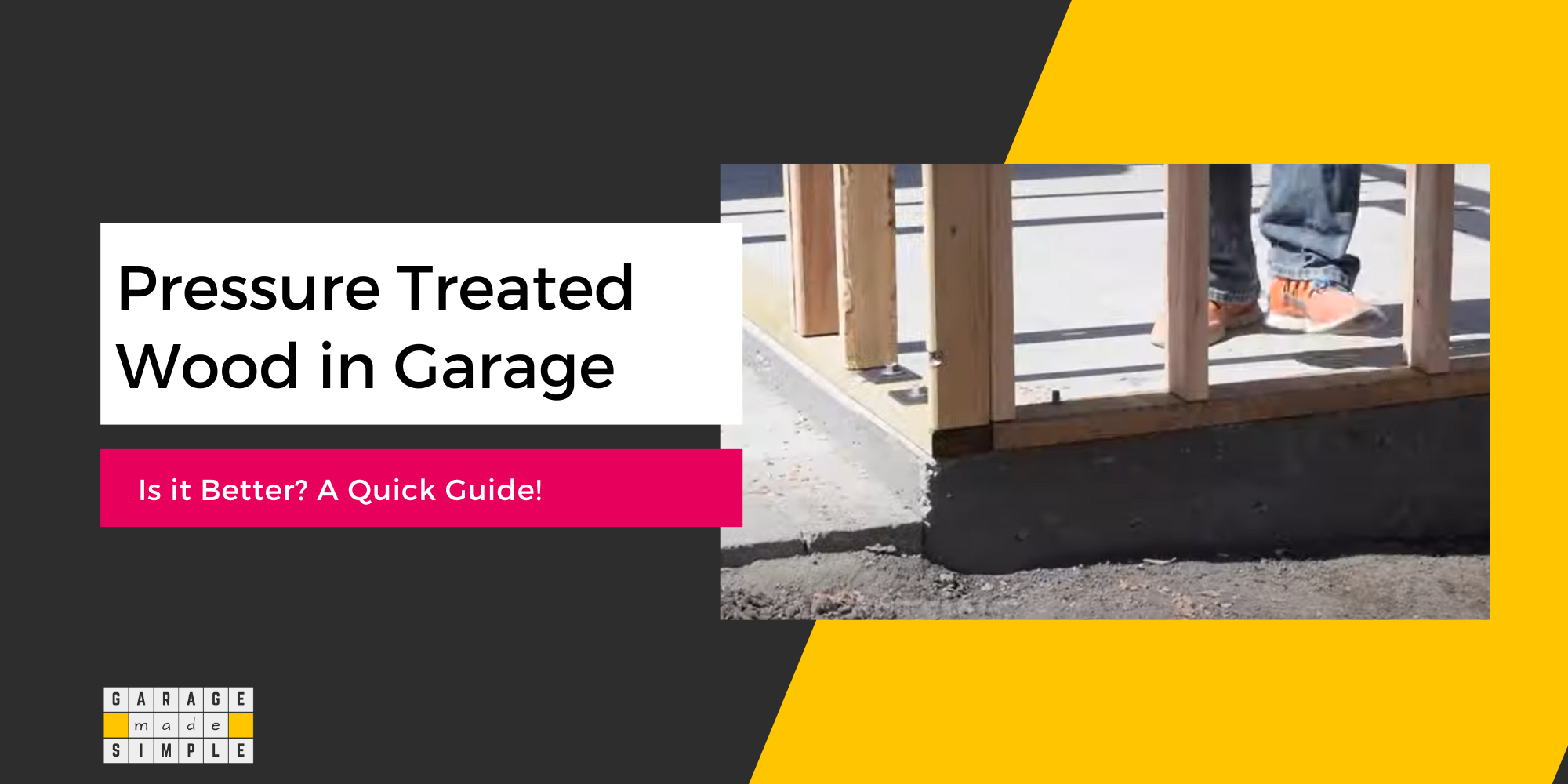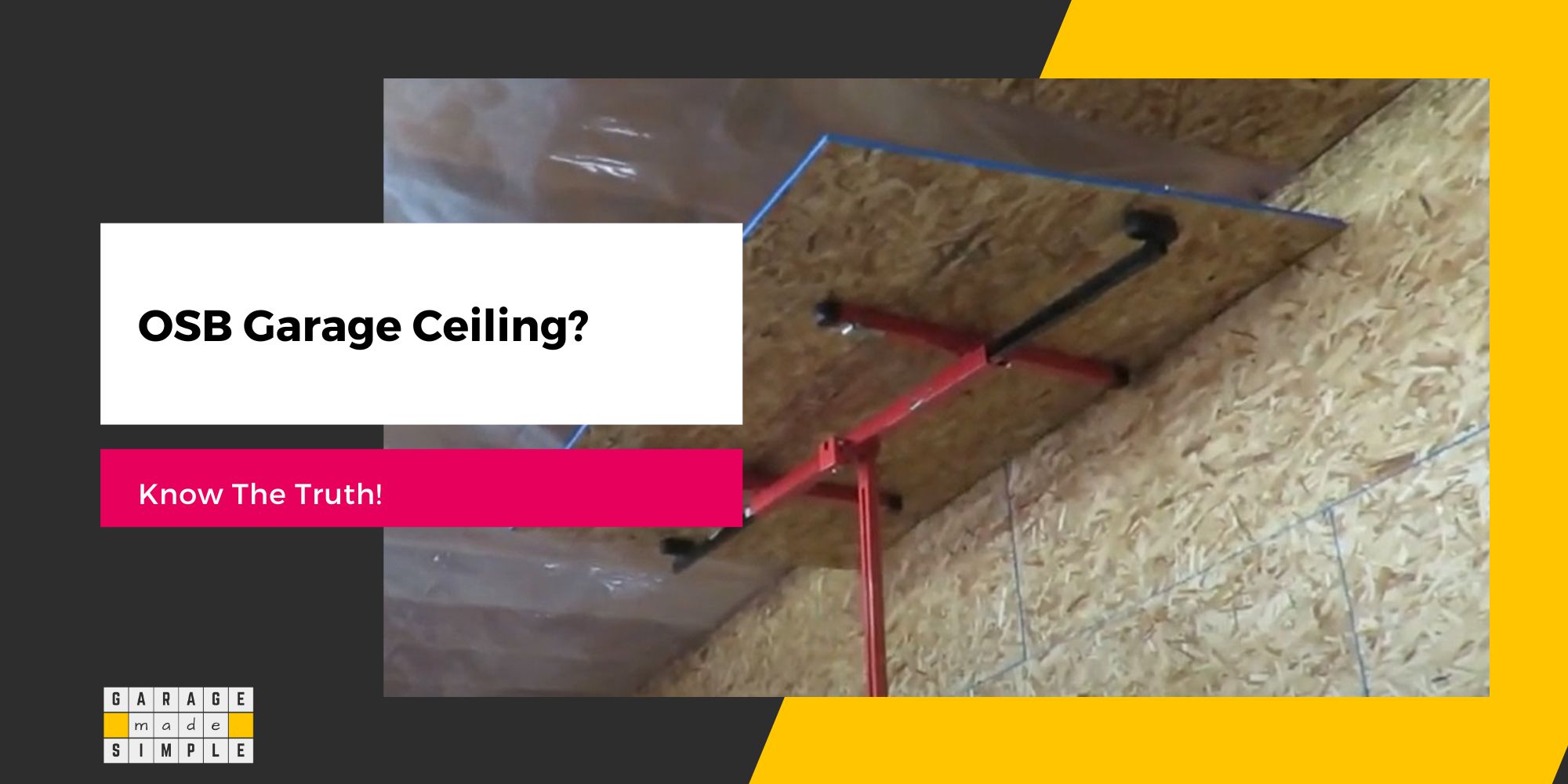Best Screws For Stud Mounting? (5 Important Parameters!)
garagemadesimple.com is a participant in the Amazon Services LLC Associates Program, an affiliate advertising program designed to provide a means for sites to earn advertising fees by advertising and linking to Amazon.com . The website is also an affiliate of a few other brands.
Key Takeaways: Choosing the Best Screws for Stud Mounting
- Screw Material: Stainless steel screws, like Power Pro 48628 Wood Screws, are ideal for stud mounting due to their strength and rust resistance.
- Screw Head: Look for screws with large, flat heads that don’t sink into wood. This design provides a strong grip.
- Screw Diameter: Screw size is denoted by a number (#1 to #24) corresponding to the shank diameter. Choose the size that suits your project’s needs.
- Screw Length: Screws should penetrate the stud at least ½ and no more than ⅔ of its depth. Add the wood piece’s thickness to determine the required length.
- Code Compliance: While the International Residential Code doesn’t explicitly mention screws for stud wall framing, it does permit their use for certain applications, such as attaching sheathing.
Nails and screws are used extensively in stud wall framing, but how to pick the best screws for stud mounting? Screws may appear to be a very small part of the construction process, but they sure play a big role!
Buying screws is not easy. You can get overwhelmed by the huge variety of screws available at the hardware store. Each type has its pros and cons and is designed with one specific purpose in mind.
You will use different types of screws in your garage, for attaching sheathing to wood frames and mounting cabinets or shelves on to studs. So you need to get the best screws for stud mounting, when you need them.
Understanding these parameters will help you select the best screws for your stud mounting projects, whether it’s for sheathing, cabinets, or other woodworking tasks.
5 Important Parameters for Best Screws For Stud Mounting
Following 5 important parameters determine the suitability of a screw for a specific project and will be your guide to picking the best screws for stud mounting:
- Screw Material
- Screw Head
- Screw Diameter
- Screw Length
- Code Compliance
Once you have a good understanding of these 5 important parameters, it will be easy for you to pick the best screws for stud mounting.
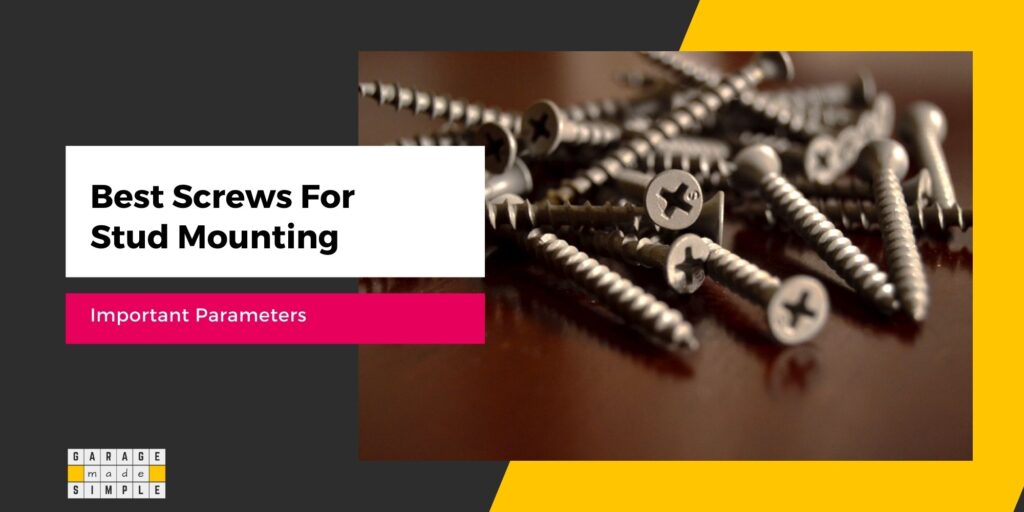
Remember, one screw type does not fit all job types. The ideal screw length for drywall and stud will not be right for stud screws for TV wall mount.
Let us get into the details of each of the parameters, so that you can pick the best screws for stud mounting.
What Material Is Best for Wood Screws?
Wood screws can be made from brass, bronze, aluminum and steel.
Stainless screws are the best screws for stud mounting as they are strong and rust free. Moreover they are readily available in the size you require. They are quite affordable too.
Check out Power Pro 48628 Wood Screws, #10 x 3″, Premium Stainless Marine Screws. They are made from alloy steel but have a high marine grade 305 Stainless Steel Coating that offers superior rust and corrosion protection. Designed to reduce the chance of wood splitting in studs.
You could also go for epoxy coated bronze screws for projects that do not involve mounting heavy loads. Check out Power Pro 48611 Wood Screws, #9 x 3″, Epoxy Coated Bronze Screws. The epoxy coating on bronze offers superior rust and corrosion protection.
Which Type of Screw Head Is Best?
The best screws for stud mounting have a large, flat head that does not sink flush into the wood. The screw head, along with the screw threads, helps hold the two wood pieces together under tensile stress.
Broadly speaking screw heads are designed to be flush with the top surface or stand out. Your choice depends on the aesthetic requirements of your project.
Screw heads that will be on a visible surface are better sunk flush with the surface. Trim head and bugle screws are designed as self-countersinking. Typically their load bearing capacity is not very high. As such they are not the best screws for stud mounting.
Screw heads that stand out above the surface provide a stronger grip, especially on hardwoods. The flatter and bigger the head, the more load the screw can hold. The contact area can also be increased by use of washers.
Bosch PS21-2A 12V Max 2-Speed Pocket Driver Kit
Bosch PS21-2A 12V Max 2-Speed Pocket Driver Kit
The NEW Bosch 2nd Generation PS21-2A 12 Volt Max 2-Speed Pocket Driver features a compact and lightweight design.
The compact design, featuring the shortest height and shortest head length, makes this driver small enough to fit into tight areas and corners.
Along with compactness, the Next Generation Driver features the lightest weight in class making it great for over the head continuous work.
How Do You Know What Size Screws to Get?
The screw size is denoted by a number which corresponds to the diameter of the shank. The number ranges from #1 to #24. The higher the number the more the diameter. For example the diameter of #1 size screw is 1/16” while that of a #24 size screw is ⅜”.
Below is a Table for some of the popular screw sizes used in woodworking.
| Screw Size # | Shank Diameter (in) | Thread Diameter (in) | Recommended Use |
| #4 | 3/32 | 1/8 | Attaching hinges, small crafts |
| #6 | 1/8 | 9/64 | Attaching hinges, small crafts, light duty furniture, drawers & cabinets |
| #8 | 9/64 | 11/64 | Light wood construction, furniture, cabinets, mounting TV on stud walls |
| #10 | 5/32 | 3/16 | General construction, heavy duty furniture, decks, mounting standard cabinets on stud walls |
| #12 | 11/64 | 7/32 | Heavy duty construction, hanging doors or mounting heavy cabinets on stud walls |
NOTE: The screw threads can be traditional (thread diameter is the same as shank diameter) or modern (thread diameter is greater than shank diameter). Traditional screw threads are created by cutting into the shank. Modern screw threads are created by rolling the shank.
The best screws for stud mounting use modern screw threads for higher strength and grip.
How Long Should Wood Screws Be for Studs?
The screw should penetrate the stud a minimum of ½ and a maximum of ⅔ of the stud depth. A 2X4 stud is 3 ½” deep. So the screw should penetrate to a minimum depth of 1 ¾” and a maximum depth of to 2 ⅜”.
Add to this the thickness of the wood piece that you will attach to get the length of the screw you need.
As an example, if you want to mount a cabinet, with a ¾” thick back board, to a 2X4 stud the screw length should be at least 2 ½” and not over 3”. Actually 3” long screws will be just perfect to support the cabinet on the 2X4 studs.
TIP 1: Add 2 ¼” ( almost 2/3rd of the stud depth) to the thickness of the wood piece you wish to mount on a 2X4 wood stud to get the length of the wood screw you need.
TIP 2: Add another ½” to ⅝” if the wall already has drywall or plywood sheathing.
SCREW LENGTH – READY RECKONER (to get the screw length on the go)
Use the ready reckoner below to get the screw length on the go! (Rounding the length up or down by ⅛” is OK).
| ITEM THICKNESS | 2×4 STUD WITH DRYWALL | 2×4 STUD WITHOUT DRYWALL | 2×6 STUD WITH DRYWALL | 2×6 STUD WITHOUT DRYWALL |
| ¼” | 3” | 2 ½” | 4 ½” | 4” |
| ½” | 3 ¼” | 2 ¾” | 4 ¾” | 4 ¼” |
| ¾” | 3 ½” | 3” | 5” | 4 ½” |
| 1” | 3 ¾” | 3 ¼” | 5 ¼” | 4 ¾” |
| 1 ½” | 4 ¼” | 3 ¾” | 5 ¾” | 5 ¼” |
Are Screws Permitted in Code for Framing?
Use of screws for stud wall framing is not mentioned in the International Residential Code. However, screws for attaching sheathing to the stud is mentioned.
The use of fasteners, such as nails & screws, is covered in Table R602.3(1) FASTENING SCHEDULE of Section R602 of 2021 International Residential Code (IRC).
Items 8 – 15 specify “nail specifications” for different types of stud joints in wood wall framing. Screws are not included in this group.
Nails are considered more suitable for stud wall framing as they perform better than screws under shear loads. Nails are flexible and will bend a bit (but not snap) maintaining the structural integrity of the wall frame.
Screws are better than nails under tension as the threads embed into the wood grains and can not be pulled out easily. You can pull out a nail with a claw hammer but you can not pull out a screw. You have to unscrew it.
Items 36 – 37 specify both nail and screws as a means to attach gypsum sheathing to the stud wall frame. The specification reads “1 ¼” screws, Type W or S”
Table R602.3(2) ALTERNATE ATTACHMENTS TO TABLE R602.3(1) permits the use of screws for attaching fiber cement boards and screw shank nails for attaching plywood to stud frames.
Screws can be used for framing non load bearing walls such as interior or partition walls.
Thank you very much for reading the post. I do hope you found it informative and useful.





